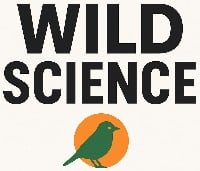A new report released on World Bee Day identifies twelve emerging threats that could accelerate pollinator losses over the next decade, with microplastics, conflict-driven crop simplification, and poorly planned climate actions topping the list. The findings from Bee:wild, a science-led global campaign, highlight how these novel dangers could compound well-established threats like habitat loss and pesticides.
Why does this matter? Nearly 90% of flowering plants and over three-quarters of the world’s food crops depend on pollinators like bees, butterflies, and bats. As these vital species face mounting pressures, our food security and natural ecosystems hang in the balance.
Hidden Pollutants Emerge as Major Concern
The report, titled “Emerging Threats and Opportunities for Conservation of Global Pollinators,” identifies several lesser-known forms of pollution as serious new risks to pollinators.
“Microplastics are more widespread than previously thought. They likely pose a serious threat to wild pollinators as well,” notes the report, which cites research showing these tiny plastic particles can increase mortality, reduce body mass, and alter gut health in bees.
Testing from 315 honey bee colonies across Europe revealed synthetic materials like PET plastic in most hives, suggesting widespread contamination that could affect wild pollinators.
Other emerging pollution threats include:
- Antibiotic residues potentially affecting bee foraging behavior
- Air pollution impairing insect survival and reproduction
- Artificial light at night reducing nocturnal pollinator flower visits by 62%
- Heavy metals affecting bee health, behavior, and survival
War and Conflict Create Unexpected Threats
Surprisingly, conflict zones are creating new hazards for pollinators. Countries affected by war or heavily dependent on food imports often prioritize domestic production of staple crops, simplifying agricultural landscapes and reducing plant diversity.
According to Professor Simon Potts, lead author and chair of Bee:wild’s Scientific Advisory Board, “By acting early, we can reduce harm and help pollinators continue their important work in nature and food production.”
“Identifying new threats and finding ways to protect pollinators early is key to preventing further major declines,” he continues.
Climate Solutions That Backfire
Some well-intentioned climate change mitigation efforts are inadvertently creating new challenges for pollinators:
Fast-growing trees planted for carbon capture often harm wildlife when replacing flower-rich habitats. While the European Commission aims to plant 3 billion trees by 2030, the report notes that species selection and placement are critical for avoiding ecological damage.
Other climate-related concerns include increased mining for electric vehicle battery materials and the growing shift to indoor farming, which removes wild pollinator habitat while often introducing managed bees that may compete with wild species.
Solutions on the Horizon
The report isn’t all doom and gloom. It also identifies twelve promising opportunities for pollinator protection, including:
- Stronger laws limiting antibiotic pollution
- Transition to electric vehicles to reduce air pollution
- Plant breeding to enhance pollen and nectar for better pollinator nutrition
- Creating flower-rich habitats in solar parks
- Developing targeted RNA-based treatments that control pests without harming beneficial insects
Dr. Deepa Senapathi, co-author and Vice-Chair of Bee:wild’s Scientific Advisory Board, explains: “Meaningful action to protect bees is not a ‘nice-to-have’ future aspiration – practical solutions that we can implement now already exist and more are emerging.”
“The most promising opportunities are ones that tackle multiple problems at once. Focused and determined action could significantly slow and even reverse pollinator decline while creating environments that benefit both nature and people,” she adds.
What Can We Do?
Eva Kruse, Executive Director of Bee:wild, emphasizes that everyone has a role to play: “We were already sounding the alarm on the decline of our pollinators, but this new report underlines that the range of threats are expanding. Rather than being filled with hopelessness, the purpose of the Bee:wild campaign is to fuel awareness, urgency and give everyone agency.”
“There’s a lot we can all do to help save our pollinators, in our homes and everyday lives. Planting flowering plants to feed them, providing outdoor shelter and considering healthier diets like plant-based as well as pesticide-free, all matter a lot.”
Razan Khalifa Al Mubarak, President of the International Union for Conservation of Nature (IUCN), provided the report’s foreword, noting: “The choices we make today will shape the future – not only for pollinators, but for all life on Earth. Together, we can ensure that these remarkable species continue their vital work, sustaining the natural world that sustains us all.”
As the report concludes, “This is not just a biodiversity issue: pollinators are central to our food systems, climate resilience, and economic security. Protecting them means protecting ourselves.”
Discover more from Wild Science
Subscribe to get the latest posts sent to your email.

